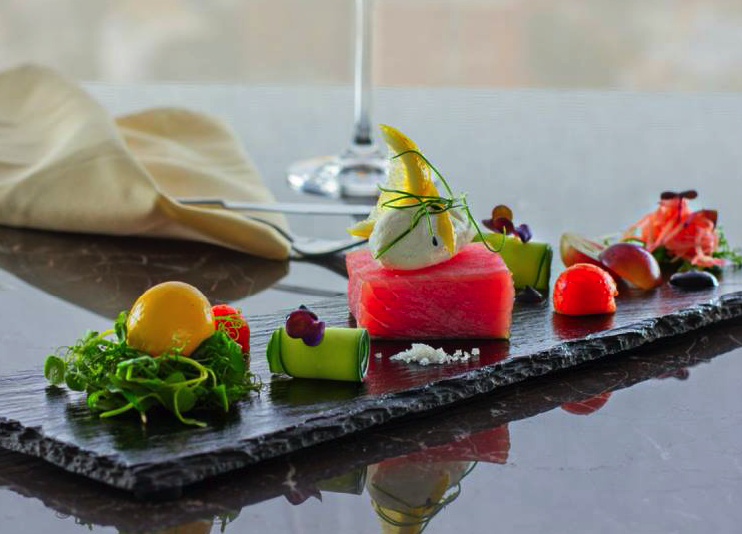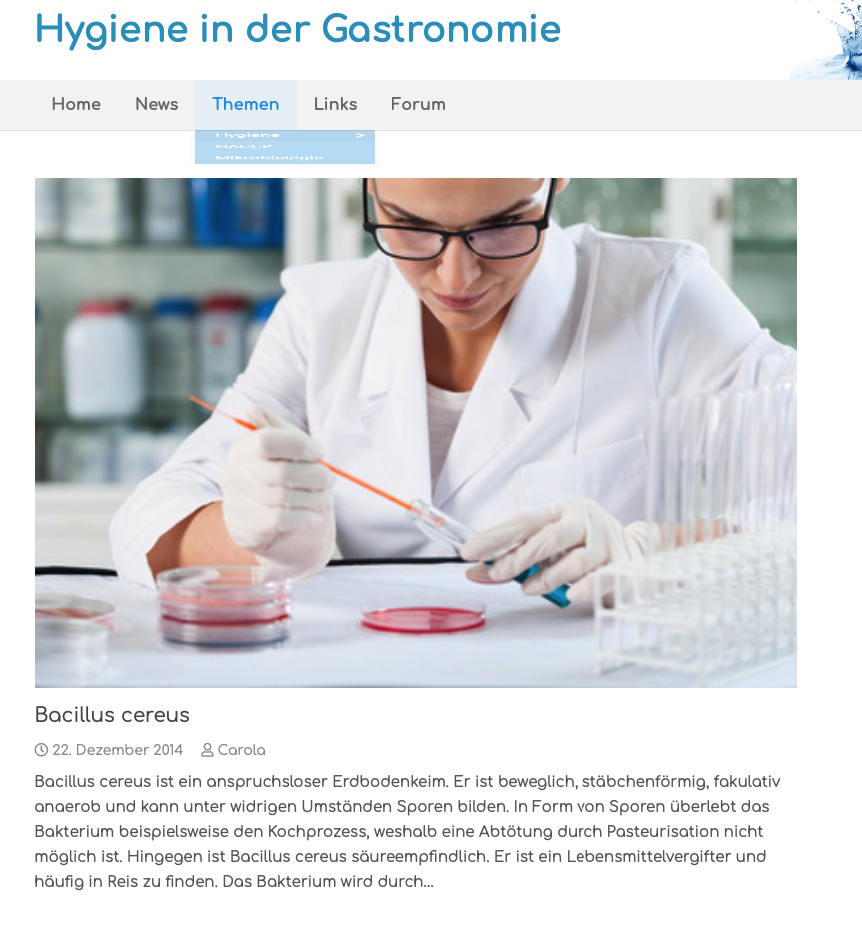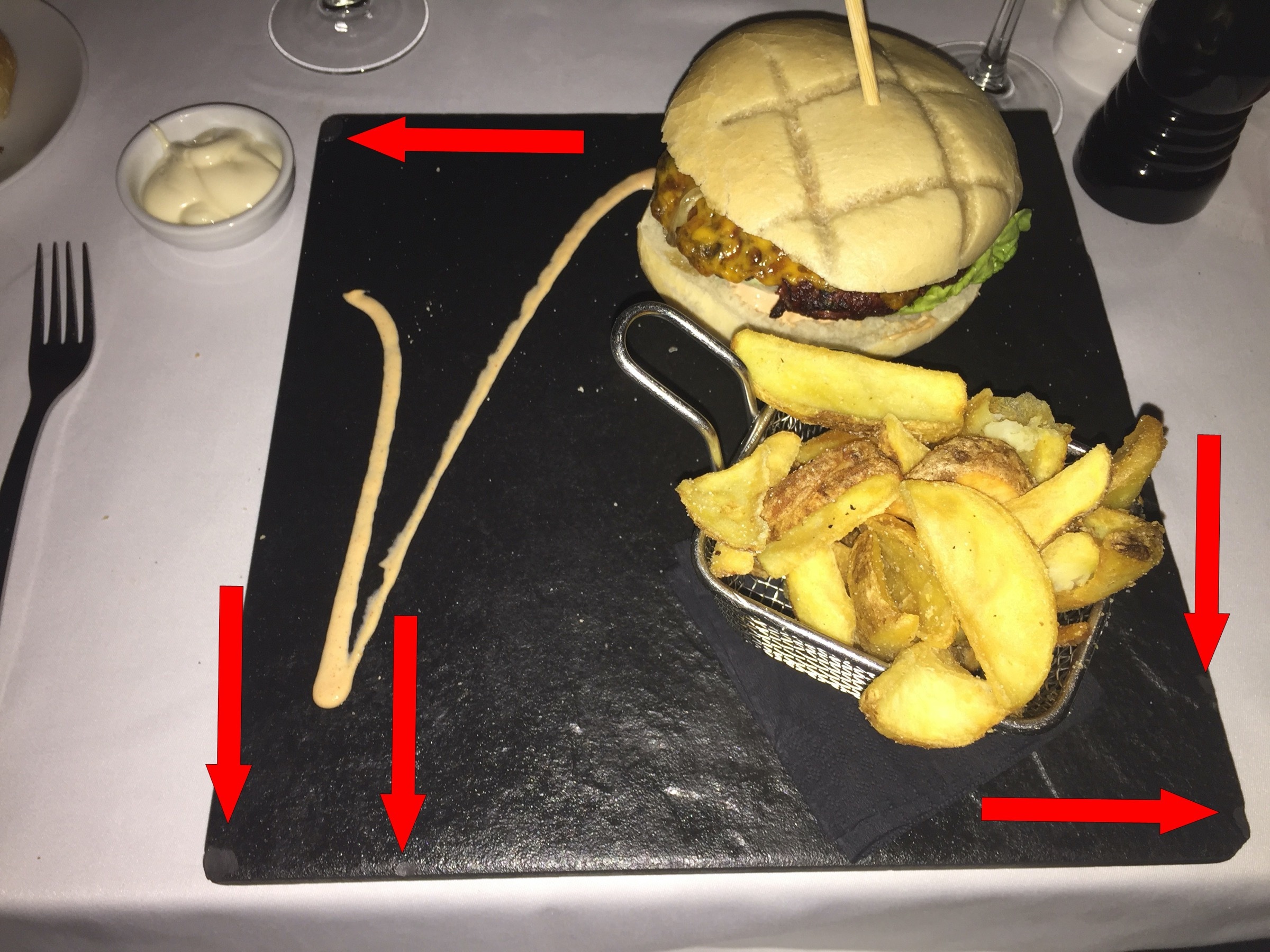Real slade
Serving food on real slate

(Image source: ChefsTalk on Facebook)
No problem: it simply looks "top"! A black background gives strong colours such as red, yellow or green an invigorating effect and represents something different from a plain white plate. A stone also reinforces the feeling of grounding, nature and strength. Together, such arrangements convey beauty and therefore flavour and creativity, thus stimulating a sense of enjoyment.

However, an enlargement of the real slate illustrates its unsuitability for use with food. Slate is the name for a tectonically folded sedimentary rock that has a metamorphic porosity. Such an open-pored surface provides an ideal breeding ground for the colonisation of germs and bacteria. This is particularly the case when, for example, meat dishes leave behind blood residues or ice cream, creams or desserts containing milk or cream favour the risk of salmonella formation.

Real slate that is suitable for use with food is sealed with special food-safe varnishes. So-called "food-safe clear lacquers" are available by mail order for less than 10 euros. Other varnish manufacturers describe only UV curing technology as suitable for applying a varnish suitable for food contact. 10 out of 10 samples of slates purchased lacked permanent manufacturer labelling and a suitable description of the conditions under which the slate loses its suitability for food contact.
3 out of 10 samples were labelled "suitable for decoration only".

(Image: Burger speciality from a well-known restaurant chain)
Just like a wooden plate or melamine crockery, food served on real slate plates causes doubts and concerns for any enlightened guest. Lacquers are usually of chemical origin and completely rob the slate of its claim to nature and sustainability. Which is worse, untreated slate or varnished slate? Has it been rinsed or have residues penetrated the porous slate? Serving on a dark slate, on which you cannot see many residues with the naked eye, gives rise to doubts - and in case of doubt, a bad feeling. Even worse and a complete no-go are slates that already have visible damage and open areas, as clearly visible in the picture above.
Hand washing is recommended for all types of slate, whether varnished or natural. And this in an age of staff shortages, temporary staff and always 100% tip-top clean sculleries in the catering trade. Certainly.
Porcelain gives 100% prevention
(Copyright by n-tv 2019-11-11)
- 100% Food safe
- 100% Mold free
- 100% Cut safe
- 100% Easy and fast to clean
- 100% Dishwash-safe
- 100% Splinterfree
- 100% Oven proved
- 100% Microwave safe
- 100% Best guest experience
- 100% Seemingly infinite servicespan
- 100% Innovation
- 100% Prevention
- 100% Gastronomic responsibility
Slate porcelain

However, there is an alternative that is also 100% suitable for commercial use. You can serve food with a slate look without compromising on cleanliness, safety and hygiene! Slate porcelain from Holst!
Conscientious hosts give their guests peace of mind!
